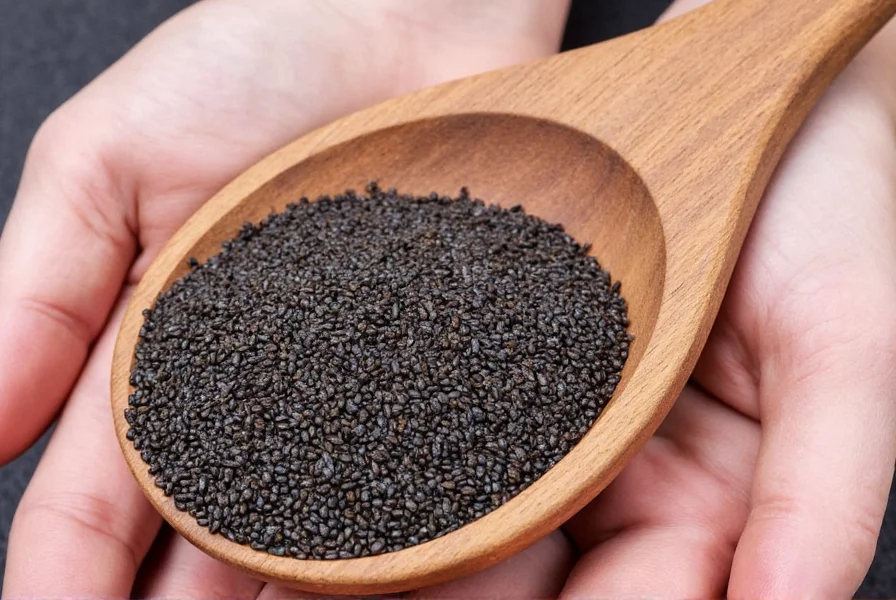10 Surprising Ways Organic Black Sesame Seeds Spice Up Your Life (Literally!)
Organic black sesame seeds are no longer just the topping on your favorite bun — they’re flavor powerhouses, nutritional dynamos, and kitchen MVPs. Whether you're a seasoned chef or a weekend snack hacker, these tiny black jewels can elevate your cooking game in ways you never imagined.
Table of Contents
- Why You Should Care About Organic Black Sesame Seeds
- The Nutritional Lowdown: What’s Inside These Tiny Seeds?
- How to Use Black Sesame Seeds for Maximum Flavor
- Pro Cooking Tips: Toasting, Grinding, and Storing Like a Pro
- Beyond the Kitchen: Beauty and Wellness Benefits
- Buying Guide: How to Choose the Best Organic Black Sesame Seeds
- Final Thoughts: Go Black, Go Bold!
Why You Should Care About Organic Black Sesame Seeds
Let’s start with the basics: what makes organic black sesame seeds so special? Compared to their white counterparts, black sesame seeds have a more robust flavor and are richer in certain antioxidants and minerals. The term “organic” means they’ve been grown without synthetic pesticides, fertilizers, or GMOs — a win for both your body and the planet.
If you’ve ever tasted traditional Japanese goma tofu or Middle Eastern tahini made from black sesame, you know it's not just about color — it’s about depth of flavor and authenticity.
The Nutritional Lowdown: What’s Inside These Tiny Seeds?
You’d be amazed by the nutrition profile packed into such small packages:
| Nutrient | Per 1 oz (28g) |
|---|---|
| Calcium | 98 mg |
| Magnesium | 103 mg |
| Iron | 4.1 mg |
| Zinc | 2.2 mg |
| Dietary Fiber | 3.5 g |
| Healthy Fats | 14 g |
They also contain lignans like sesamin and sesamolin, which may support heart health and reduce inflammation. For vegans and dairy-free eaters, black sesame is an excellent source of calcium — something often missing in plant-based diets.
How to Use Black Sesame Seeds for Maximum Flavor
- Add crunch to salads: A sprinkle over kale or soba noodle salads gives a nutty bite and visual pop.
- Make your own tahini: Blend toasted black sesame seeds with a splash of olive oil and salt for a dark, rich alternative to regular tahini.
- Stir into yogurt or oatmeal: For a breakfast upgrade that’s both nutritious and Instagram-worthy.
- Bake with them: Mix into cookies, muffins, or bread for a subtle earthy note.
- Garnish soups and stews: Especially in miso, tomato, or coconut-based dishes for a finishing touch.

Pro Cooking Tips: Toasting, Grinding, and Storing Like a Pro
The way you prepare black sesame seeds dramatically affects their flavor. Here’s how to unlock their full potential:
Toast Gently
Use a dry skillet on medium heat and toast the seeds for 2–3 minutes, stirring constantly. They’ll darken slightly and become fragrant. Don’t walk away — these little guys burn fast!
Grind Right
For pastes or sauces, use a mortar and pestle or food processor. If you want a smoother texture (like for desserts), add a fat like coconut oil or tahini base.
Store Smartly
| Storage Method | Shelf Life |
|---|---|
| Room temperature (sealed jar) | 3–6 months |
| Refrigerator | 6–12 months |
| Freezer | Up to 18 months |
Beyond the Kitchen: Beauty and Wellness Benefits
Did you know black sesame seeds are used in Ayurveda and Traditional Chinese Medicine (TCM)? Here’s how they extend beyond your plate:
- Skin Glow Boosters: Rich in vitamin E and antioxidants, making them great for skin elasticity and repair.
- Hair Health Hero: Often used in oils and scalp treatments to strengthen hair and promote growth.
- Anti-Aging Ally: The antioxidants fight free radicals, helping slow visible signs of aging.
- Digestive Aid: When ground, they’re easier to digest and help relieve constipation thanks to fiber and healthy fats.
Buying Guide: How to Choose the Best Organic Black Sesame Seeds
Not all black sesame seeds are created equal. Here’s what to look for when shopping:
Top Brands Comparison
| Brand | Country of Origin | Flavor Profile | Recommended Use | Packaging Size |
|---|---|---|---|---|
| Green Earth Organics | India | Rich, nutty, with a slight sweetness | Smoothies, baked goods, granola | 12 oz bag |
| Summit Harvest | Ethiopia | Earthy, bold, slightly bitter | Salads, Asian dishes, dips | 16 oz resealable pouch |
| Island Naturals | Thailand | Mild, buttery, aromatic | Beauty DIY, sauces, light baking | 8 oz glass jar |
| EarthKiss Organics | Mexico | Smoky, roasted notes | Roasted snacks, spice blends, wraps | 10 oz eco-friendly packet |
What to Look For
- Certified Organic Label: Ensure USDA Organic or EU Organic certification.
- Country of Origin: Ethical sourcing matters — Ethiopian, Indian, and Thai seeds are most commonly preferred for flavor diversity.
- Freshness: Avoid bags with rancid smell or dull color.
- Packaging: Dark, airtight containers preserve oils better.
Final Thoughts: Go Black, Go Bold!
From boosting your morning oats to becoming the star of your next dinner party dish, organic black sesame seeds deserve a permanent spot in your pantry. They offer unmatched flavor complexity, impressive nutrition, and versatility across cooking, wellness, and even beauty routines.
Ready to level up your spice game? Grab a bag, toast them up, and let the magic begin. You might just find yourself going back for seconds… and thirds.










 浙公网安备
33010002000092号
浙公网安备
33010002000092号 浙B2-20120091-4
浙B2-20120091-4